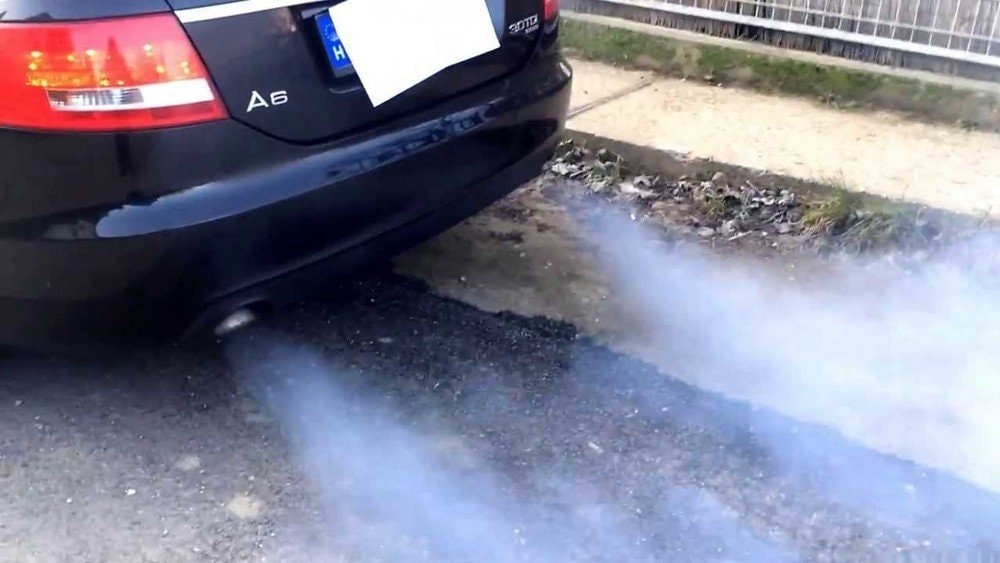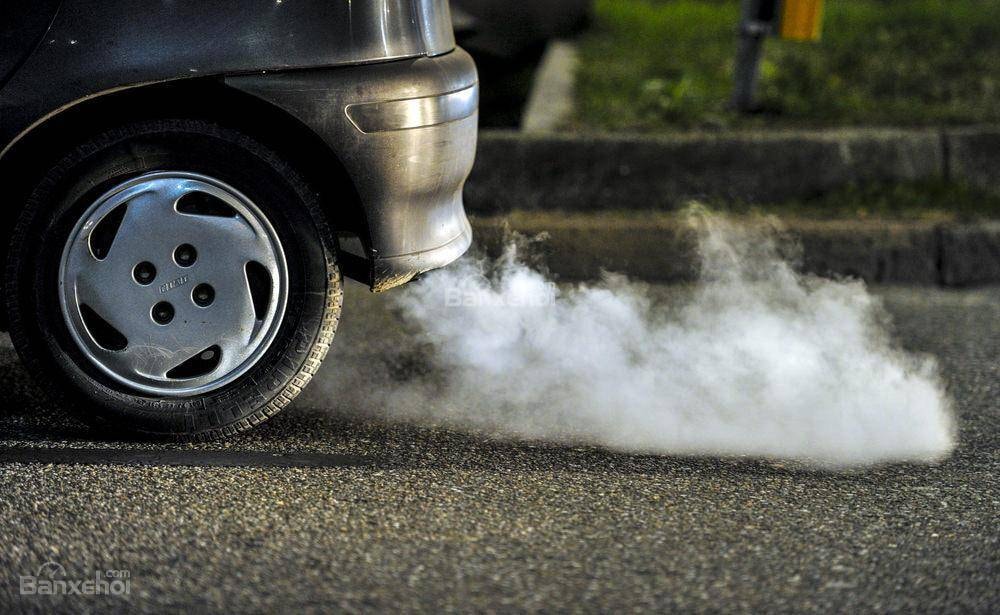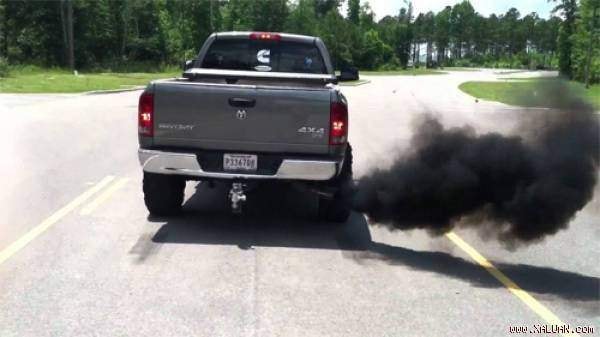Causes and solutions when cars emit smoke
By observing the color of smoke coming out of the exhaust pipe, you can detect the problem of your car and quickly fix it.
 |
If you start your car on a cold winter morning and see a faint trail of smoke coming from the rear, don't panic, it's probably just water vapor in the exhaust pipe heating up and evaporating.
But if you live in a hot area or your car is moving on the road, smoke is obviously not a good thing. Let's go over the main reasons as well as what to do when you encounter such an unexpected situation.
1. Blue smoke
The bad news is that the engine is burning oil, which happens because the valve seals (also called cups) or piston rings are loose and the cylinder is damaged, allowing oil to leak into the combustion chamber. Burning oil can cause oxygen sensors to fail, and the engine's lubrication system is low on oil and doesn't have enough oil pressure to function.
In fact, blue smoke is quite rare, but if you are unlucky enough to fall into this situation and continue driving, it is likely that the engine will be seriously damaged, especially on long trips or on the highway. So you should be alert, consider, check and take appropriate action to protect your car.
How to handle:
When encountering this situation, it is obvious to smell the burning oil smell, then you should check the oil level through the dipstick, if the oil is lower than the recommended level, you should add it immediately. Do not let the engine work without lubricating oil, this will lead to more serious damage such as piston seizure in the cylinder.
After that, a general check of the engine is needed, from measuring the lubricating oil pressure, checking for oil leaks under the crankcase, valve rubber seals, piston rings and cylinders. Damaged parts need to be replaced or repaired, or even the engine needs to be overhauled.
2. White smoke
 |
CarWhite smoke from a car can be caused by a gasoline engine burning coolant or transmission oil. The main cause is a leaking engine head gasket or a cracked engine head that prevents the combustion chamber from being sealed, allowing coolant and transmission oil to leak into the gasoline engine and mix with the fuel, creating white smoke.
For diesel engines, when emitting white smoke, it may be due to coolant entering the combustion chamber like in gasoline engines or fuel not burning completely. The cause is due to the injector working at the wrong time or one of the cylinders not having enough compression pressure. Accompanying the white smoke will be a damp smell due to the coolant burning and evaporating, or the unpleasant smell of burnt gearbox oil.
How to handle:
When you see white smoke coming from your car, you need to determine whether the cause is due to condensation in the exhaust pipe or not. If it is not due to condensation in the exhaust pipe, you need to check carefully and “first aid” immediately to minimize the risk of more serious problems that may occur to your car.
When the injector works at the wrong time or one of the cylinders does not have enough compression pressure.
If you see white smoke with an unpleasant, damp smell due to the coolant burning, evaporating and burnt transmission oil. At this time, you need to check the coolant level and transmission oil level to determine the exact cause and handle it promptly.
Check the cooling system pressure if the radiator is low on coolant and the engine is overheating, and replace the head gasket if necessary.
Add coolant and transmission fluid immediately before proceeding with the repair steps. If necessary, take the car to a garage for a comprehensive check to avoid a bad situation happening to the car.
3. Black smoke
 |
This is the most common form of smoke on the road, and unlike the two cases above, you can still complete your journey and stop at the garage afterwards because this is not too serious and can be fixed relatively simply.
In old diesel engines, black smoke is an indispensable part when starting or under heavy load, but this is completely "abnormal" with car models or pickup trucks with "clean diesel engines" (using electronic ECU control and Common rail fuel injection system). The reason is that the engine receives too much fuel than needed: due to the injector working at the wrong time or the controller having problems.
In addition, black smoke appears in gasoline engines because the air-fuel mixture is too rich and the combustion process is not complete (too much fuel, too little air), especially when the vehicle is heavily loaded. If black smoke appears frequently and a thick layer of soot accumulates under the exhaust pipe, it is clear that the engine is taking in more gasoline than necessary.
In gasoline engines with carburetors, rich fuel and black smoke can be caused by a faulty choke, metal or plastic in the carburetor, a low fuel float, and a dirty fuel filter. In modern fuel injection systems, black smoke from the exhaust comes from one or more leaking injectors, excessive injection pressure, a faulty oxygen sensor, or a miscalculated control unit.
How to handle:
If the engine uses a carburetor, when this happens, you need to check the condition of the automatic choke or fuel float and replace it if necessary.
If your engine is fuel injected, you will need to check the fuel or oil pressure, check that the air filter is clean, and also take your car into a service area for more detailed checks, such as the sensors and injector assembly.


